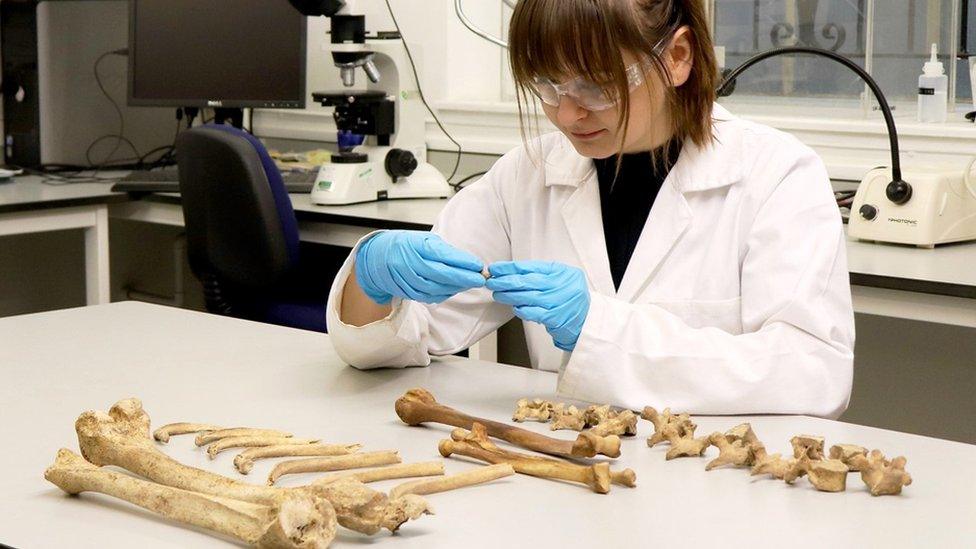History of Aberdeen diet through the centuries explored
- Published

Bone sampling has been used for diet research
The changing diet in Aberdeen through the centuries and its impact on health is to be explored thanks to a Heritage Lottery grant.
The University of Aberdeen has been awarded £10,000 to showcase how food consumption has evolved.
The project includes analysis of bones dating from Neolithic and Pictish times.
And a series of public talks on the 'Hungry Histories', external project will take place at Aberdeen Maritime Museum.
Dr Kate Britton, a senior lecturer in the Department of Archaeology, said: "Aberdeen is uniquely placed for this type of investigation.
"Recent archaeological excavations, such as those at St. Nicholas Kirk, Aberdeen Art Gallery and the council offices at Marischal College have yielded preserved archaeological biological material - including many human skeletons - dating back across almost 10 centuries.
"This is an unparalleled opportunity to investigate changes in health, diet and even immigration in Aberdeen over the last thousand years."
Dr Chris Croly, of the university's Public Engagement with Research (PERU) team, added: "The food consumed by our ancestors not only had a major impact on their health and wellbeing, it was at the heart of the social and political complexities of these times.
"It's great to be able to bring this research to the public in a variety of different ways."
- Published9 July 2014
